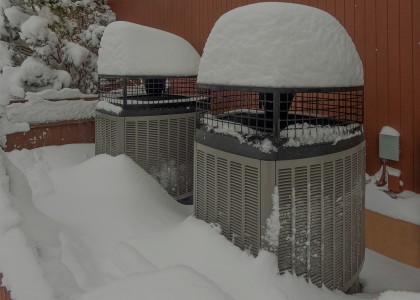The United States is facing two simultaneous and unprecedented crises. One is immediate and discussed daily (the COVID-19 pandemic and associated recession), and one has faded from discussion but is nonetheless urgent (climate change). State energy efficiency policies are well-suited tools for addressing both of those crises, and policymakers should be accelerating those efforts.
As a prime example, state energy regulators can help drive an economic recovery—and simultaneously pursue climate goals—by capitalizing on energy efficiency resource standards (EERS). These are state policies that require utility customer energy efficiency programs to achieve specified energy savings. These policies need to be protected and enhanced. Fortunately, public utility commissions in several states are already showing the way forward.
Twenty-seven states have EERS policies. They’re a proven mechanism for cutting household and business energy costs and reducing air pollution from power plants. And they’re a key component of many states’ efforts to achieve aggressive goals to reduce greenhouse gas emissions to combat climate change. But state regulators now face the challenge of maintaining these bedrock policies during the pandemic—with jobs and the climate at stake.
Efficiency contractors have been devastated—and some proposals could make the situation worse
Unfortunately, the COVID-19 crisis has not spared the energy efficiency and weatherization contractors who help utilities meet these targets, who are sometimes limited by necessary social distancing measures. According to a recent report, 360,000 U.S. energy efficiency workers—15% of the clean energy sector workforce—are out of their jobs.
Worse yet, parties in some states (e.g., Ohio, New Jersey, Missouri) have advocated changes that would perpetuate that impact, taking funding away from energy efficiency and redirecting it to other areas. Even if well-intentioned, such proposals are short-sighted and ultimately counterproductive. For one, they would delay measures that reduce greenhouse gas emissions. But what is perhaps less understood is that they would also be wrong-headed for purposes of responding to the COVID-19 crisis, because they would exacerbate, not alleviate, the economic crisis. Fortunately, proposals that would take funding away from efficiency have for the most part been rejected. However, they could resurface, and new proposals could arise.
Efficiency mandates are an economic opportunity and a climate imperative
Energy efficiency programs can help states and localities with economic recovery from the COVID-19 crisis in three important ways: (1) reducing household and business energy bills, directly helping with affordability challenges; (2) serving as an economic stimulus by generating increased local employment (energy efficiency programs tend to be very labor intensive); and (3) reducing ”dollar drain” from the local economy by reducing the need for imported energy fuels (most states, and nearly all local communities, have to import the fossil fuels they consume from outside of their territory, resulting in a substantial dollar outflow).
While dealing with the COVID crisis is necessarily a central focus for states at this time, a critically important second priority must be to continue aggressive efforts to address the looming climate crisis. In any other time, the report in late June that the temperature in the Arctic Circle reached 100°F would have received much attention as a jarring reminder of the climate crisis we face. Let us hope that our leaders are up to the challenge of continuing to confront that crisis, even as they respond to the COVID-19 emergency. Fortunately, supporting energy efficiency is one of the fastest, most cost-effective tools to reduce greenhouse gas emissions.
Regulators can ensure economic and climate progress at the same time
So what are state policymakers and utility regulators to do? To begin, it’s crucial to not abandon well-established energy efficiency policies and goals, including EERS policies. Some utilities, like Xcel in Colorado, are on track to meet 2020 energy savings targets, and even proposed expanded 2021–2022 projected targets. However, others’ targets may need to be adjusted. Medium-term goals (over the next two to three years), however, should be preserved. In fact, if energy efficiency is included as a key part of state economic recovery efforts, medium-term goals might even be increased.
Regulators should review efficiency efforts in light of the COVID-19 crisis, and where possible, ensure that the existing policy infrastructure for energy efficiency, including EERS goals, can serve as a tool for economic recovery. A couple of examples of proactive and timely action by state regulatory commissions are worthy of note.
In April, the Michigan Public Service Commission issued an order that called for staff to meet with utilities and stakeholders to “identify potential impacts on meeting energy or demand savings targets and ways to mitigate such impacts and ensure program continuity.” As a good example of a practical response for preserving Michigan’s EERS, the resulting MPSC staff report is recommending rolling the 2020 utility energy efficiency goals into a new two-year goal framework, thereby preserving the original total savings for 2020 and 2021 programs combined. In the near term, the Commission also called for a particular focus on improving energy efficiency for low- to moderate-income families, with a special concern for helping with affordability.
In May, the Minnesota Public Utilities Commission issued a notice requiring utilities to report to the Commission on “All Rate Regulated Electric and Gas Utilities’ Investments that May Assist in Minnesota’s Economic Recovery from the COVID‐19 Pandemic.” Commissioners specifically called for actions that “[i]ncrease access to conservation” and “reduce carbon or other pollutant emissions.” In response, Xcel submitted a proposal to expand energy efficiency and conservation programs and increase assistance to low-income customers.
While maintaining and even expanding energy efficiency program efforts during the COVID-19 crisis brings many challenges, they are not insurmountable. ACEEE recently provided practical suggestions and resources for sustaining these programs during restrictive times, and setting the stage for a strong resurgence when conditions permit.
These are challenging times. But continuing and enhancing aggressive energy efficiency policies and programs can support both the needed economic recovery and stronger action against climate change.




